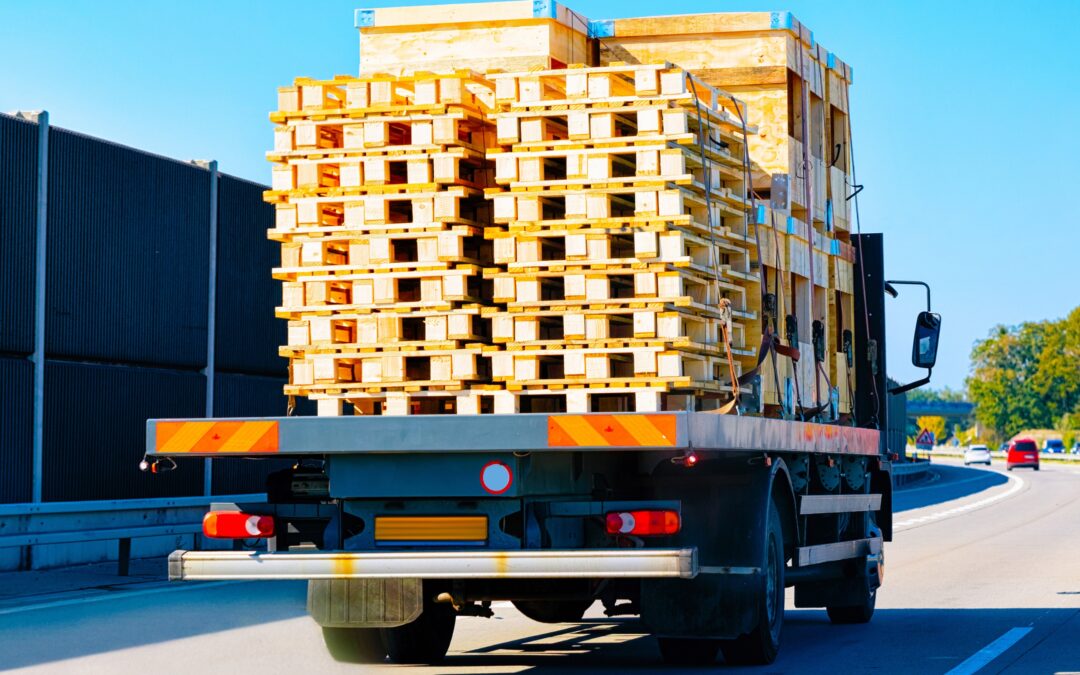Pallets and pallet safety are ubiquitous in the logistics and supply chain industry, serving as the backbone for the storage and transportation of goods. However, their utility comes with a responsibility to maintain safety and health standards. Ensuring the safety of employees and compliance with health regulations is paramount for businesses that rely on pallets. Below are six critical safety and health standards you must know:
1. Proper Handling and Lifting Techniques
The significance of training: Proper training in handling and lifting pallets is essential to prevent workplace injuries. Employees should be educated on the correct posture and techniques for lifting and moving pallets, such as bending the knees and keeping the pallet close to the body to avoid strain on the back. Regular training sessions can reinforce safe practices and update employees on new techniques or equipment that can aid in pallet safety
The role of ergonomic tools: To further reduce the risk of injury, businesses should invest in ergonomic tools and equipment designed for pallet movement. Items such as pallet jacks, forklifts, and lift tables can minimize physical exertion required from employees, thereby reducing the incidence of musculoskeletal disorders. Ensuring that these tools are readily available and maintained in good working condition is crucial for ongoing safety.
2. Inspection and Maintenance of Pallets
Regular inspections: Regularly inspecting pallets for damage such as splinters, broken boards, or protruding nails is crucial in preventing injuries. Damaged pallets (https://extension.psu.edu/be-safe-around-wooden-pallets) can compromise the safety of goods and pose risks to employees during handling. Implementing a routine inspection process before pallets are loaded or moved can help identify and remove hazardous pallets from operation.
Maintenance protocols: Establishing a maintenance protocol for damaged pallets is equally important when it comes to pallet safety. This includes repairing or recycling pallets that cannot be safely used. Newnan Pallet Company offers services that assess and refurbish used pallets, ensuring they meet safety standards before returning to circulation. This not only promotes safety but also contributes to the sustainability of pallet resources.
3. Safe Storage Practices
Optimizing warehouse layout: Safe storage of pallets begins with an optimized warehouse layout. Pallets should be stored in a manner that prevents tipping and allows for easy access without creating obstructions. Utilizing racking systems designed to hold pallets securely can prevent accidents related to pallets falling or collapsing.
Weight distribution and stacking: It’s critical to adhere to guidelines on weight distribution and the maximum stacking height for pallets. Overloading or improperly stacking pallets can lead to structural failures, risking injury to employees and damage to goods. Employees should be trained on the specifics of weight limits and stacking practices to ensure compliance with safety standards.
4. Use of Personal Protective Equipment (PPE)
The necessity of PPE: Personal Protective Equipment (PPE) is vital in minimizing the risk of injuries when working with pallets. Depending on the task, PPE may include gloves to protect against splinters, steel-toed boots to prevent foot injuries, and eye protection when performing operations that may produce debris.
Creating a culture of safety: Beyond merely providing PPE, businesses must cultivate a culture of safety where the use of protective gear is standard practice. This includes training on the correct use of PPE and ensuring that equipment is readily available and in good condition. Encouraging employees to prioritize safety can significantly reduce workplace incidents.
5. Fire Safety Standards
Risk of fire with wooden pallets: Wooden pallets, while widely used, pose a significant fire risk if not stored properly. Businesses must adhere to fire safety standards, which include maintaining clear aisles, proper storage away from ignition sources, and limiting the stack height of pallets to reduce the intensity and spread of potential fires.
Implementing fire prevention strategies: Fire prevention also involves regular inspections for fire hazards, the use of fire-retardant materials in pallet construction, and ensuring that sprinkler systems are not obstructed by stacked pallets. Training employees on emergency procedures and the proper use of fire extinguishers can further enhance safety.
6. Compliance with National and International Standards
Understanding regulatory requirements: Compliance with national and international safety standards is not just about avoiding penalties; it’s about ensuring the well-being of employees and the efficiency of operations. Standards such as those set by the Occupational Safety and Health Administration (OSHA) in the United States provide guidelines on pallet usage, storage, and handling that businesses must follow.
Staying informed and compliant: Regularly reviewing and updating safety protocols to align with the latest standards is crucial. This may involve consulting with safety experts or partnering with organizations.
________________________________
Pallets are indispensable to the logistics and supply chain industries, facilitating the efficient transport and storage of goods. Yet, their utility comes with significant responsibilities — notably, the need to adhere to stringent safety and health standards to protect employees and ensure operational compliance. By implementing proper handling and lifting techniques, conducting regular inspections and maintenance, adhering to safe storage practices, utilizing appropriate personal protective equipment, maintaining fire safety standards, and staying compliant with national and international regulations, businesses can create a safer working environment and a more resilient supply chain.
Incorporating these six safety and health standards into your business operations not only mitigates risk but also demonstrates a commitment to the well-being of your workforce and the efficiency of your operations. Partnering with experts like Newnan Pallet Company can provide the support and guidance needed to navigate these complexities, ensuring that your pallet management practices are not only compliant but also contribute to the sustainability and success of your business. Remember, safety is an investment in your company’s future, and by prioritizing the health and safety of your employees, you are building a foundation for lasting operational success.
Share On :-

